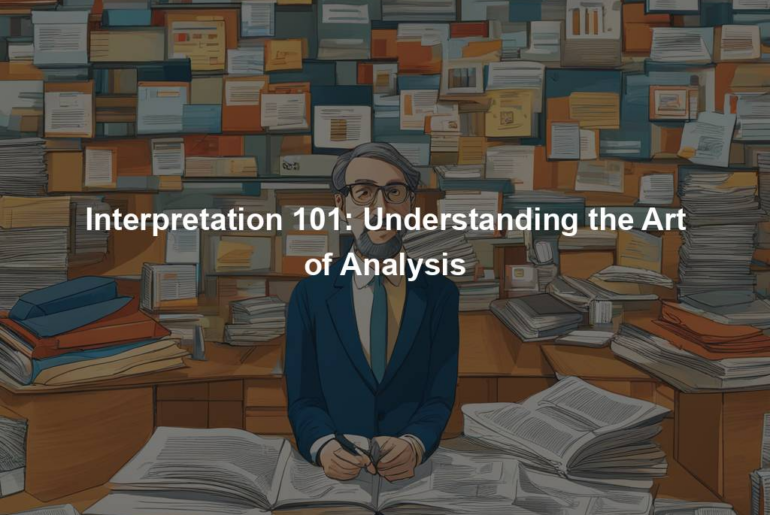Interpretation is a crucial skill that allows us to delve deeper into the meaning of various forms of art and media. Whether it is analyzing a film, decoding a piece of literature, or deciphering a painting, the art of analysis opens up new dimensions of understanding. In this article, we will explore the basics of interpretation and learn how to unlock the hidden messages and nuances contained within works of art.
1. The Context
Interpretation begins with understanding the context in which a piece of art was created. Context encompasses various elements such as the artist’s background, era, social and political climate, as well as the medium and genre. By considering these factors, we can better comprehend the artist’s intentions and the underlying themes they aim to convey.
A. Research
To understand the context fully, conducting research is essential. Dive into the artist’s biography, examine the historical events of the time, and explore any references or influences that may have contributed to the creation of the work. The more you know about the context, the more profound your interpretation can become.
B. Symbolism
Symbolism plays a prominent role in art, providing a language through which artists express their ideas. Symbols can be objects, colors, or even specific gestures that convey deeper meanings. To interpret a work, identify and analyze the symbols used, considering both their individual significance and how they interact to develop the overall message of the piece.
2. Looking Beyond the Surface
While it’s important to appreciate the surface-level elements of a piece of art, true interpretation requires going beyond initial impressions. To achieve this, we need to focus on the various elements of the artwork.
A. Composition
The composition of an artwork refers to how different visual elements are arranged and organized. Analyzing composition involves observing the positioning, balance, and proportion of these elements to understand how they contribute to the overall impact of the artwork. Look for patterns, lines, and spatial relationships between objects to unravel deeper layers of meaning.
B. Narrative
Art, especially in mediums like painting or cinema, often tells a story. Analyzing the narrative structure helps us understand the progression of events, the relationships between characters, and the overall message being conveyed. Identify key plot points, character arcs, and themes to gain a comprehensive understanding of the story being depicted.
3. Subjectivity and Multiple Interpretations
It is important to remember that interpretation is subjective and can vary from person to person. Each individual brings their unique background, experiences, and perspective, which influences how they perceive and interpret art. Furthermore, a single work of art can often be open to multiple interpretations.
A. Personal Experience
Our personal experiences greatly shape the way we interpret art. Each viewer may resonate with different aspects of the work based on their own emotional connections, memories, or cultural background. Embrace the subjectivity of interpretation and explore how your personal experiences contribute to your understanding of the art piece.
B. Artistic Intention vs. Audience Response
Artistic intention refers to what the artist wanted to convey through their work. However, audience response can greatly shape the overall meaning as well. Different interpretations and reactions by viewers add layers of complexity and can lead to unexpected insights. Recognize that your interpretation is just one of many possibilities, and engaging in discussions with others can provide valuable insights.
Conclusion
Interpretation is an art form in itself, allowing us to connect with and understand the deeper layers of meaning within art. By delving into the context, exploring symbolism, analyzing composition, and considering multiple perspectives, we gain a richer understanding of the artist’s intentions and the profound messages communicated through their work. So, the next time you encounter a piece of art, engage your analytical skills, let your imagination roam free, and embark on a journey of interpretation.

